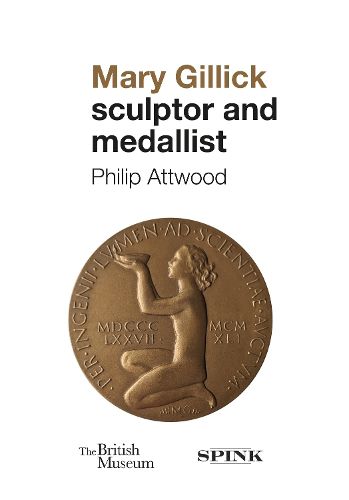Readings Newsletter
Become a Readings Member to make your shopping experience even easier.
Sign in or sign up for free!
You’re not far away from qualifying for FREE standard shipping within Australia
You’ve qualified for FREE standard shipping within Australia
The cart is loading…






Mary Gillick, nee Tutin (1881-1965), is probably best remembered for the portrait of Queen Elizabeth II that appeared on UK coins from the beginning of her reign until decimalisation in 1971. This book focuses on her career as a sculptor and medallist - a career that had begun at Nottingham School of Art and the Royal College of Art and had already spanned more than fifty years when she experienced the sudden burst of national fame that came with the royal commission. Gillick’s work combines the influence of early Italian Renaissance medals with an appreciation of modernism and shows a readiness to adapt as she responded to changes in the art market. Her experience also adds to the debate on the impact on women of marriages between artists (she was married to sculptor Ernest Gillick from 1905, until his death in 1951) and the choices open to women sculptors of her time. This is the very first study of such an iconic British artist to be published, and is sure to attract the attention of both numismatists and anyone interested in the history of British art alike.
$9.00 standard shipping within Australia
FREE standard shipping within Australia for orders over $100.00
Express & International shipping calculated at checkout
Mary Gillick, nee Tutin (1881-1965), is probably best remembered for the portrait of Queen Elizabeth II that appeared on UK coins from the beginning of her reign until decimalisation in 1971. This book focuses on her career as a sculptor and medallist - a career that had begun at Nottingham School of Art and the Royal College of Art and had already spanned more than fifty years when she experienced the sudden burst of national fame that came with the royal commission. Gillick’s work combines the influence of early Italian Renaissance medals with an appreciation of modernism and shows a readiness to adapt as she responded to changes in the art market. Her experience also adds to the debate on the impact on women of marriages between artists (she was married to sculptor Ernest Gillick from 1905, until his death in 1951) and the choices open to women sculptors of her time. This is the very first study of such an iconic British artist to be published, and is sure to attract the attention of both numismatists and anyone interested in the history of British art alike.